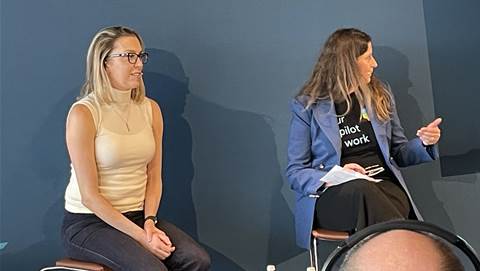In part one of this series, we looked at the critical business areas where boards are increasingly navigating the unknown. The concept of the unknown is uncomfortable for most chairs and non-executive directors - we’ve been placed in our roles for what we know.

If we accept that navigating the unknown is increasingly on the horizon for boards and companies, what tools and strategies can we use to ensure we navigate the unknown?
We all recognise that if we manage the unknown with courage and calm, we can make our companies and the people stronger and keep them on track.
Managing fear – pragmatism and mindset
Breaking this down further, overcoming fear involves a combination of practical strategies and mindset shifts so that we can make good decisions no matter the circumstances. Whether it's fear of failure, uncertainty, or change in the business context, there are some effective ways for boards to manage fear.
Acknowledge the fear you are experiencing and accept it as a valid emotion.
Rather than pushing it away or trying to pretend it doesn’t exist, robs fear of its power as it allows you as an executive to see yourself as separate from the fear. You will see you can operate and add value despite the fear that is present for yourself and your colleagues.
Understand the source of your fear.
Is it a specific risk, a potential outcome, or a broader concern about the unknown?
Identifying the root cause can help you better address and manage the fear. Understanding the source of your fear will enable you to make decisions that address it directly and potentially make it dissipate entirely.
Knowledge is a powerful tool in managing fear.
Educate yourself about the factors, whether market trends, regulatory changes, or technological disruptions. Understanding the landscape to reduce uncertainty and build confidence means you are armed with knowledge before the event arises.
Create contingency plans.
Address potential risks and challenges that are fuelling your fears. Concrete plans of action provide control and preparedness.
Reach out to mentors, colleagues, or industry experts.
Speak to them for perspective and advice as an external viewpoint can offer clarity and reassurance.
What can you control?
Fear often arises from a sense of powerlessness. Focus on the aspects of the situation that are within your control, such as decision-making processes, risk management strategies and fostering a positive work environment.
Adopt a growth mindset
Sees challenge as an opportunity for learning and improvement. By reframing fear-inducing scenarios as growth opportunities, you can shift your perspective.
Clear your mind
Use whatever means works for you to enable a reset. Put some space between yourself and the issue. Sometimes you need to hit pause to move forward.
Break it down.
If your fear is linked to a large, overwhelming issue, break it down into smaller steps. This makes the situation less daunting and enables proactive action.
Stay informed.
Keep abreast on industry developments, market trends, and regulatory changes. Being adaptive and open to change helps.
Surround yourself with a supportive network.
A trusted colleague or peer, who you can discuss hypothetical scenarios with are invaluable during a time like this. This also plays to the dance floor to balcony analogy.
Managing fear can mean taking calculated risks.
Evaluate any potential outcome and make informed decisions that align with your risk tolerance. Ask yourself: “what’s the worst that can happen”.
Recognising and acknowledging progress can boost confidence and counter fear.
When you pause, take the time to reflect on what is behind you. What did you do well? What could have been better? How will you take those learnings into future scenarios?
Invest in professional development and training to enhance your skills and knowledge.
Regular investment in your development takes confidence but it’s the only way you can protect your most valuable asset - you - and continue to be an asset to the companies you serve.
Sitting in uncertainty
Addressing fear requires a proactive and strategic approach, at times collaboratively too.
In approaching fear in uncertain times, it’s important to approach the Board’s role with a balance of pragmatism and compassion.
By fostering an environment of trust, resilience and strategic alignment, the board can navigate uncertainty with confidence and lead the organisation toward sustainable success.
In the end, sitting in uncertainty is a strategic move. It allows for a space of contemplation, where the Board can collectively access their knowledge, expertise and skills, integrate this with patience, active listening and drive a pause on ‘reacting’ or not ‘doing’.
Our job is to visualise what success will look like, create measures for knowing when we have achieved it and, most importantly, articulate the benefits of going forward to all stakeholders and staff.
As the world becomes more complex and uncertain, the ability to sit in uncertainty will be a critical skill for board directors and executive leaders.
Cheryl Hayman is an independent non-executive director on listed boards Ai Media, Beston Global Foods and Silk Logistics Holdings.








.png&w=100&c=1&s=0)

 iTnews Benchmark Security Awards 2025
iTnews Benchmark Security Awards 2025
 Digital Leadership Day Federal
Digital Leadership Day Federal
 Government Cyber Security Showcase Federal
Government Cyber Security Showcase Federal
 Government Innovation Showcase Federal
Government Innovation Showcase Federal
 Digital NSW 2025 Showcase
Digital NSW 2025 Showcase












_(1).jpg&h=140&w=231&c=1&s=0)



